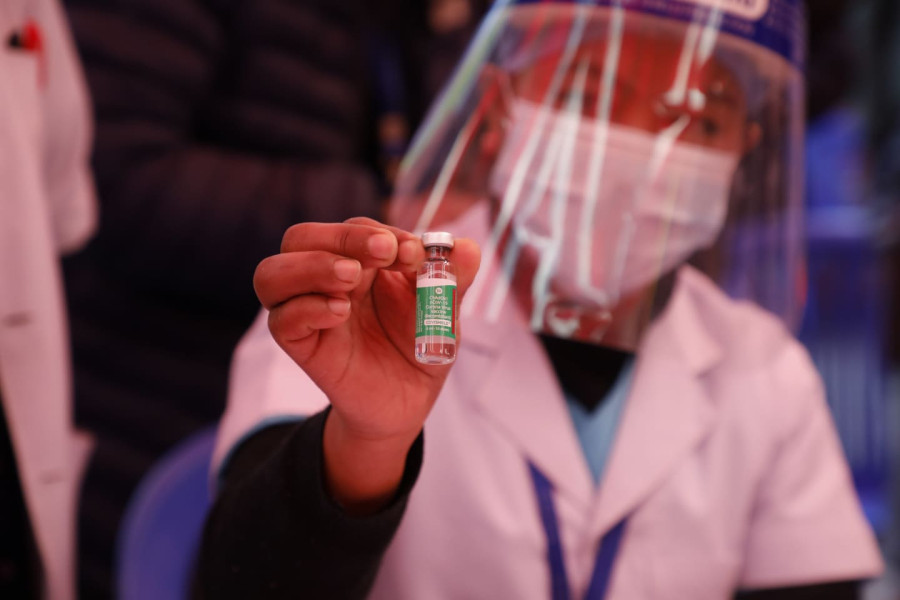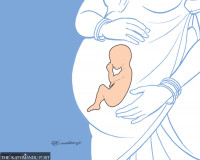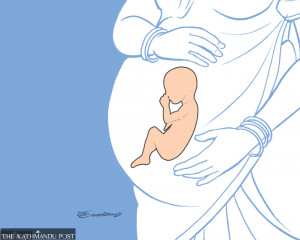Health
Poor plannings responsible for low Covid-19 vaccination rate in first phase, experts say
Scientific studies were needed to inform policy on who should get the vaccine and when, they argue.
Arjun Poudel
Of the 430,000 people on the priority list to get the Covid-19 vaccine, only 184,857 people have taken the jab so far. The number is only around 43 percent of the targeted group.
Officials at the Health Ministry had hoped that the coverage rate for the first phase would be high as front-line workers, who have been serving the infected risking their own lives, were on the list. But their hopes were dashed.
“Government apathy towards carrying out proper studies and laying plans is responsible for the low coverage of the vaccine,” Professor Dr Jeevan Bahadur Serchand, infectious and tropical disease research specialist at the Institute of Medicine, told the Post.
“Had we carried out scientific studies and made plans accordingly, results could have been different.”
However, after the Health Ministry requested all health workers with licenses from professional health-related councils, the percentage increased.
“Who would know better about the risks of infection and importance of vaccines than the health workers?” Dr Baburam Marasini, former director at the Epidemiology and Disease Control Division, told the Post. “That the coverage was low in this group suggests flaws in planning.”
Officials at the Health Ministry concede that there were flaws in the planning. They said that the target number was estimated as per the number of licences issued by different professional councils such as Nepal Medical Council, Nepal Nursing Council, Nepal Health Professional Council, and Nepal Pharmacy Council. Female community health volunteers, sanitation workers, prisoners, senior citizens residing in old age homes, and security personnel deployed in the management of the dead were also counted. Likewise, staffers deployed at the international airport, customs offices were also included.
However, officials didn’t account for health workers who wouldn’t be able to take the vaccine because they are not in the country, and are pregnant or suffering from serious health complications. Apart from that, authorities concerned did not bother to find out how many people in the targeted group had been recently infected—they can receive the vaccine only after 48 days.
“The vaccination programme was launched without any preparations,” added Marasini. “We should have launched an awareness campaign along with the vaccination drive to increase the coverage rate.”
Nepal rolled out the first phase of immunisation on January 27 using vaccines provided by India under grant assistance. The southern neighbour had provided one million doses of the Covishield vaccine developed by Oxford University and pharmaceutical giant AstraZeneca and produced by the Serum Institute of India.
The Health Ministry has started inoculating people serving in diplomatic missions and journalists from Monday using the remaining doses. Neither staffers from diplomatic missions nor journalists were on the priority list earlier.
Public health experts say apart from selecting the target and properly estimating their numbers, a study was also necessary to gauge the opinion of the people towards the vaccine.
“Awareness campaigns are needed to change the negative views of the people towards vaccines,” Dr Prabhat Adhikari, infectious disease and critical care expert told the Post. Vaccines could have been deployed in a better way had authorities concerned carried out a large-scale seroprevalence study to find out which section of society needs the vaccine the most.
“We could use the available doses for members of the high-risk group first and save them, had we known the immunity level in the general public,” added Adhikari. “We could give jabs later to those that were already infected and prioritised the elderly and those with underlying conditions.”
The Health Ministry had performed a seroprevalence study in the past, but it didn’t make the data public. Meanwhile, the Health Ministry said that it would carry out another seroprevalence study in near future.
“Vaccines will come in different batches and all eligible people will get it as per the priority list,” Mahendra Prasad Shrestha, chief specialist at the Health Ministry, told the Post. “We have given the vaccines to the staffers serving at diplomatic missions and journalists, as we have limited doses left and their number is limited.”
The ministry is preparing to procure four million doses of Covishield vaccine from the Serum Institute of India. Apart from this, the World Health Organization will provide 2.25 million doses of the vaccine by the end of February.
China has also decided to provide 500,000 doses of its coronavirus vaccine to Nepal.
“If managed properly, we can cover everyone in the high-risk group from the doses available,” said Serchand, the infectious and tropical disease research specialist. “Scientific study is also needed to gauge the efficacy of the vaccine in Nepal.”




 15.24°C Kathmandu
15.24°C Kathmandu














